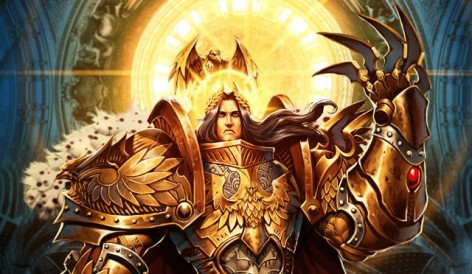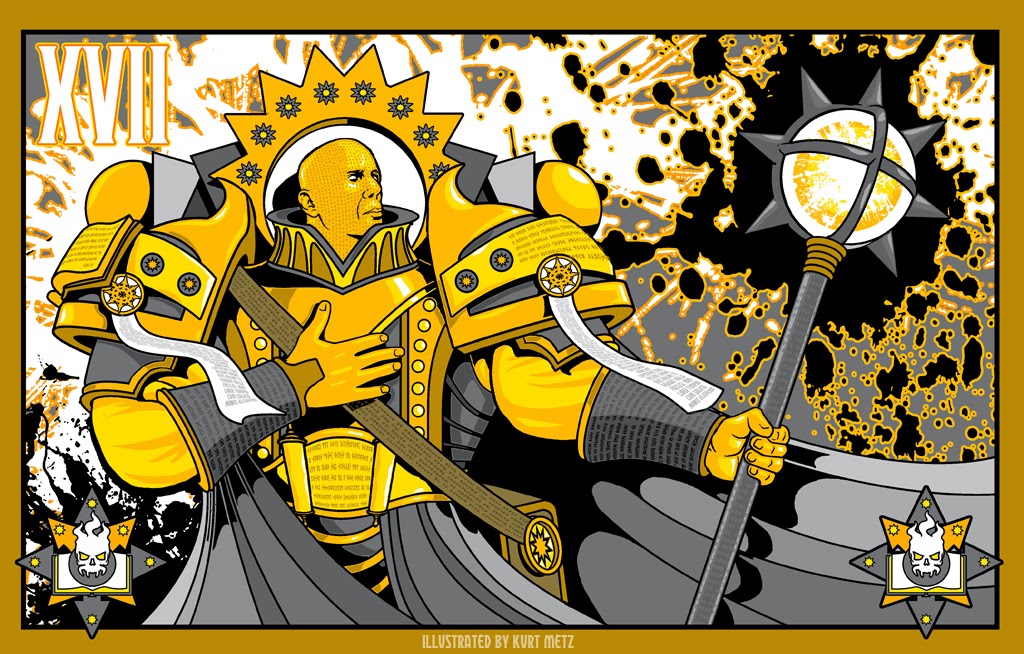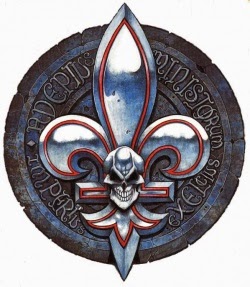40K Lore: Guess Who Made the Emperor a GOD?


Today we delve deep into perhaps the greatest tragedy of the Emperor of Mankind – his undesired ascension to godhood.
In the Beginning…
The Imperial Truth was a doctrine preached by the Imperium of Man during the years of the Great Crusade.
The contents of this belief involved the removal of religion, faith and superstition that plagued numerous Human worlds that had been recontacted by Terra. Instead, the Imperial Truth was offered by Iterators that provided the cold clarity of logic and science to the masses.
As part of his campaign to spread the Imperial truth, the Emperor’s Thunder Warriors destroyed all churches on Terra, believing it to be necessary to have humanity accept science and reason over superstition and barbarism.
The Imperial Truth began to disintegrate due to the Horus Heresy and encounters with the Dark Powers of the Warp. Many either turned Traitor as a result or embraced the growing Lectitio Divinitatus which proclaimed that the Emperor was a god.
The Words of a Twisted Son…
The Lectitio Divinitatus (also Lectio Divinitatus) was a book written by the Primarch Lorgar during the Great Crusade, before his fall to Chaos. It postulated the worship of the Emperor of Mankind as a divine being. The following of the Lectitio Divinitatus became an underground cult, believed to be the precursor of the Temple of the Saviour Emperor and the Imperial Cult, the basis of the modern Adeptus Ministorum. During the Great Crusade such cults were frowned upon by the Emperor and the Council of Terra, and most especially by the Astartes and those serving them. The Emperor downplayed his power but those who believed in the Emperor’s godhood were of the opinion – as Titus Cassar once put it – that “only the truly divine deny their divinity”.
In the 63rd Expeditionary Fleet, commanded by Warmaster Horus himself, the cult was most prevalent. Horus took steps to try to extinguish the cult, as he perceived it as a threat to his power. The remembrancer Euphrati Keeler – who was attached to the 63rd – became a major figure, venerated as a living saint and prophet of the Emperor. As a result, she was the target of Horus’ assassins at some point before she escaped from the Vengeful Spirit. Even some Astartes – such as Nathaniel Garro, the Death Guard loyalist who led the Eisenstein escape – became part of the cult at one point.
At some point after the Emperor was interred in the Golden Throne, it may have been one of the cults that took part in the war that eventually saw the rise of the Church of the Saviour Emperor, a rival, rise to power as The Ecclesiarchy
Begat Imperial Idolatry
The Imperial Cult is the cult based on the worship of the Emperor of Mankind as Master, Defender and Father of Mankind, developed following his internment in the Golden Throne. In the 41st millennium the Imperial Cult has almost unrivalled power and influence within the Imperium. Heresy against it is punished severely. The religion is administered by the Ecclesiarchy.
The Imperial Cult is the Imperium’s state religion, and in many ways the religion is the state itself; it binds humanity together in the service of the Emperor and the Imperium.
The basic precepts of the Imperial Cult, called the Imperial Creed, include the belief that all of humanity must be brought into the Imperium, the abhorrence of Xenos, and the realisation that psykers and mutation among humanity is a dire threat which must be controlled. All of these precepts have their origins in what the Emperor himself preached during the Great Crusade.
In M41, the ordinary Imperial citizen believes that the Emperor has always been venerated as an immortal and omnipotent god, but this is inaccurate. At the beginning of the Emperor’s Great Crusade, there was no Ecclesiarchy; on the contrary, the Emperor had deliberately outlawed organised religion in any form, declaring it the source of much of the strife and ignorance that had prevented humanity from achieving its potential. The idea of worship was anathema to the Emperor’s vision of a secular empire of man, ruled by reason and science. The official Imperial doctrine was that the Emperor was an extremely powerful being, the rightful ruler of all mankind, and the perfect image of humanity, but no matter how supreme, still a human being.
During the Great Crusade however, many ordinary Imperial citizens found that the light of reason and truth brought by the Emperor was not enough, and they took to worshipping him as a deity. The Emperor himself did not wish to be considered a deity, but his deeds during the Great Crusade and the very fact of his existence – an immortal man, and the most powerful psyker in the history of thegalaxy – gave rise to a cult, known as the Lectitio Divinitatus, based on a tome written by the Primarch Lorgar, postulating that the Emperor was in fact a divine being. The early central figure of the Imperial Creed was the Remembrancer and later first Saint, Euphrati Keeler.
The Emperor became an object of general veneration following the Horus Heresy and his internment within the Golden Throne on Terra. Over the following decades many individual Imperial cults sprang up throughout the Imperium, with their central theme being the redemption of humanity through the Emperor’s self-sacrifice. After a few hundred years, a single cult known as the Ecclesiarchy was formed from the unification of a number of smaller cults, which gradually absorbed the main body of believers. In M32 this cult became the official religion of the Imperium, gaining the title of Adeptus Ministorum. Remaining cults were persecuted and mostly destroyed.
Learn More of the Emperor and Lorgar
Lexicanum
~Now do you think Lorgar is the most successful servant of chaos of all time?







